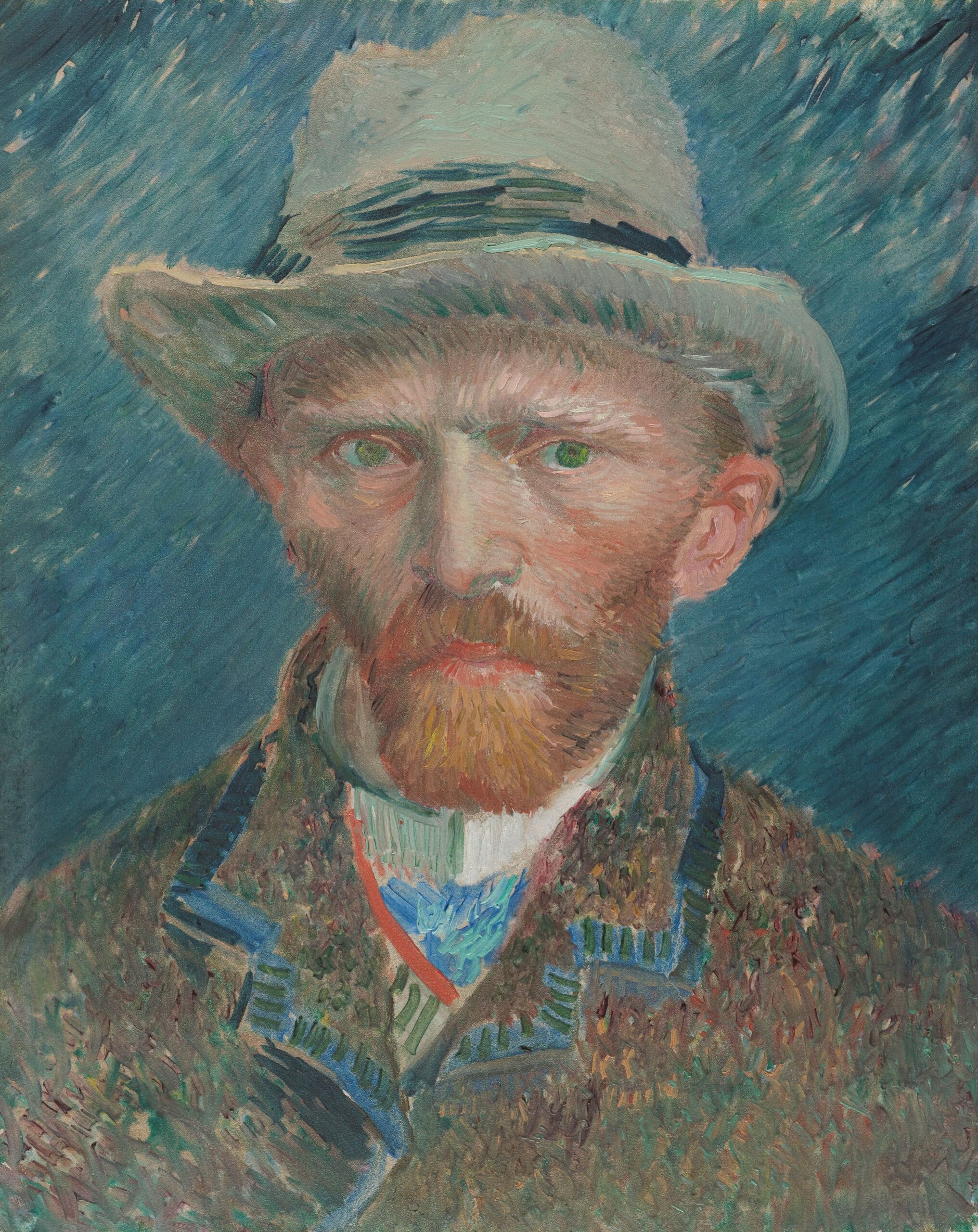Eighteen young authors have brought nineteenth-century artefacts from the Rijksmuseum to life. They have taken inspiration from the question: what do you see when you look at these objects with an eye for invisible labour? We join Daan de Jager as he looks at a self-portrait by Vincent van Gogh from 1887. ‘I detach my pinned ears from your severed ear.’
 Vincent van Gogh, Self-Portrait, 1887
Vincent van Gogh, Self-Portrait, 1887© Collectie Rijksmuseum, Amsterdam
Farewell: Van Gogh
I doff my hat to you. I loosen my scarf, so my exposed Adam’s apple sticks out like an inserted knife that cuts my voice to modest size when it tries to stray beyond the Scriptures. I push my fingers between my thin lips, into my toothless mouth, the one unable to speak up for itself, and open my gullet to let oxygen fan the flame that smoulders in my chest. My eyes cerulean blue. My heart pumps like a bellows and I produce these black sparks…
People are composed of coloured splinters. They cling together, inflamed, forging connections. The person who watches himself from a safe distance can see the whole picture. The person who watches himself from up close discovers all of his wondrous hues but runs the risk of getting lost in the labyrinth of his being. In that maze, where poverty is red and relief turquoise, wanderers from different times bump into each other. A backstreet tailor from Molenbeek, whose spine is slowly curving forwards in exchange for scant appreciation, puts his splinter pattern besides that of a home weaver from Nuenen. The blue-green may be closer to garden green, the red to garnet, but not much has changed. This is not just the labyrinth of a social class. This is also the labyrinth of a young man obsessed with the artist pattern; the as yet unrecognised painter, who toiled for hours in the shadow of his reflection. Time and again, he made new efforts to map the world through his work. In unfamiliar splinter patterns, ahead of his time. The painter took risks and ultimately failed to return from the labyrinth of his self-portrait. The young man in the maze confuses the self-portraits with his reflection. But only he who maps his own splinter pattern can be an artist. Whether or not ahead of his time. Whether or not recognised. Certainly unique. And so the young writer begins to free himself from the old patterns, which would only lead him astray, away from change.
…and I produce these black sparks. I detach my pinned ears from your severed ear. My lips speak up in favour of kissing men rather than women. I renounce the night and write in a sun. I insert a drip of black ink so I can work non-stop, like you. I restore all of my splinters, which have faded over the years, to their original colour and place them in a correct composition. Then I return to you, again and again. I come closer, closer to you and spot the differences. I keep going until we’re two people. Eye to eye. Yours green, mine blue. I raise my head. Push my fingers past my teeth and down my throat and pull out the knife. Bye, Vincent.












